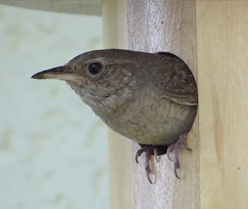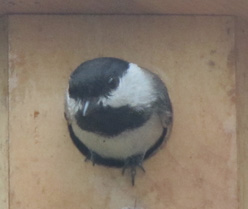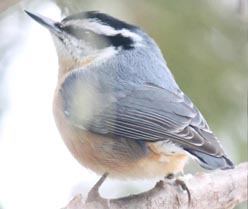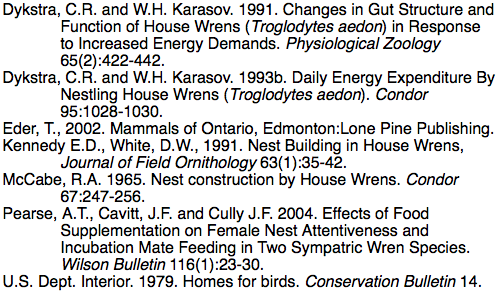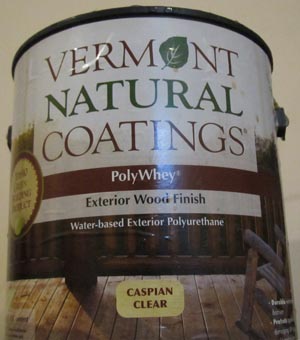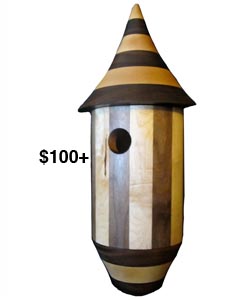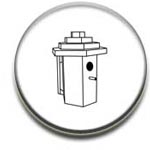 |  |
    
|
|
|
||||||||
 |
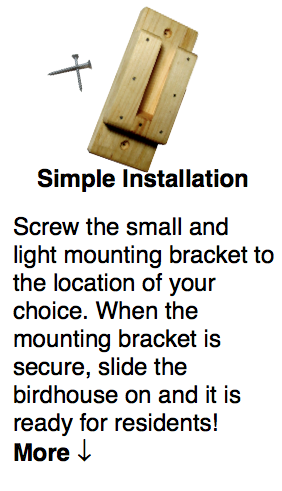 |
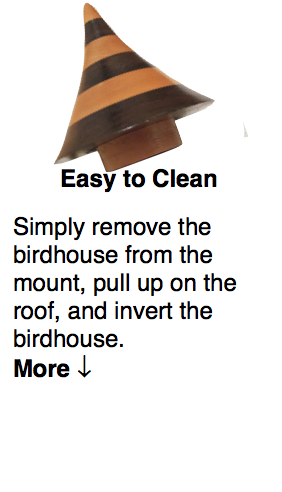 |
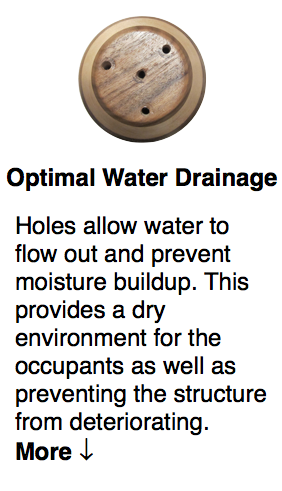 |
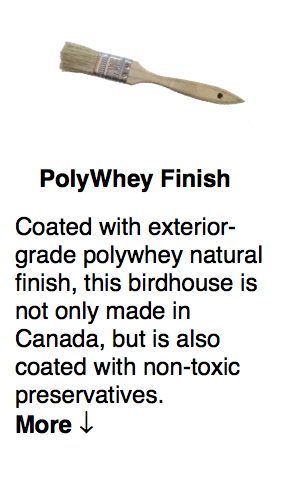 | ||||
| The Hexagonal Birdhouse uses a 1 ⅛" hole to exclude birds larger than beneficial native birds, such as the house wren. (Troglodytes aedon) This style of birdhouse is placed near the vegetable garden to attract wrens because they eat a large amount of pest insects daily. | 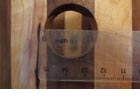 |
| Wrens have an average mass of 10.6 grams and are found to eat up to 48% of their body weight per day (Dykstra & Karasov, 1991). However, when wrens are nesting an adult house wren would need to collect 38.8 grams/day (wet mass) of insects to maintain itself and its nestlings during peak nestling food demands (Dykstra and Karasov, 1993b). While only females incubate the eggs, males generally assist in feeding nestlings (Pearse et al., 2004). In comparison, the little brown bat (Myotis lucifugus) native to Ontario will consume 5-10 grams/day of insects (Eder, 2002). House Wrens generally create a nest with a stick foundation, in which a cup is formed, and a linking of bark, dried grass, hair, feathers and occasionally snakeskin and cellophane. Males generally build the nest foundation and then the female adds the lining (McCabe 1965).The depth of the nest box was modified to be most favourable to wrens found in scientific literature. A study completed by Kennedy & White in 1991 showed smaller nest boxes of 808 cm3 to be more successful than those that had a larger volume of 1498 cm3. Cranmer Earth Design's turned box averages around 720-820 cm3. Small nest boxes are better than larger ones because Wrens are able to fill the available cavity and focus on egg laying faster (U.S. Dept. Interior 1979:8). |
|
| Finding the optimal spot in your yard can be a tricky task. The mounting bracket makes this step that much easier. Try to find an area free of predators. The harder it is for the predator to reach the birdhouse, the better chance that every brood will survive. Locations could include: |
| Metal post/pole(most favourable) Slippery building facade Brick building facade Wood siding Wooden fence post Tree trunk(least favourable) |
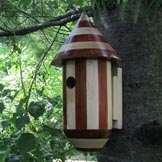 | 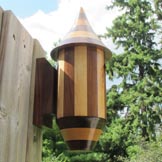 |  | 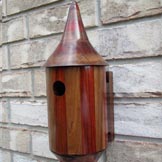 |
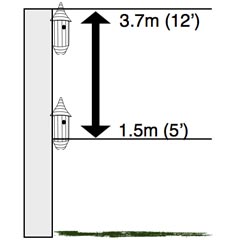 |
The birdhouse should be mounted 1.5-3.7m (5-12') from the ground facing west, south or east. |  |
| Just like the hexagonal birdhouse design, all turned birdhouses come with a bracket system. After the eggs have hatched and the birds have fledged, the birdhouse should be cleaned. If cleaned regularly, you can have up to three fledges of birds in a year. Clean by removing birdhouse from bracket, taking off the roof, and turning upside down allowing old nests to fall out. Reassemble and the birdhouse is ready for another family.
|
 |
 |
 |
 |
| The mounting bracket is designed to avoid ice build up if the birdhouse is taken inside during the winter. (As seen to the right) | 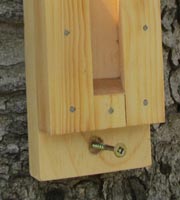 | To attach to a pole, simply use a stainless steel hoseclamp around the lower portion of the mounting bracket instead of using a screw. (As seen to the right) | 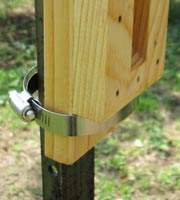 |
| The bottom of each turned birdhouse has one or more holes allowing water to flow out and prevent moisture buildup. By allowing the interior moisture to escape you are providing a dry environment for the occupants as well as preventing the structure from deteriorating. | 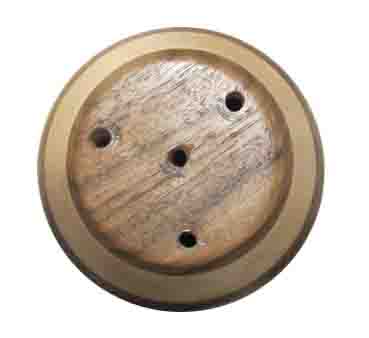 |
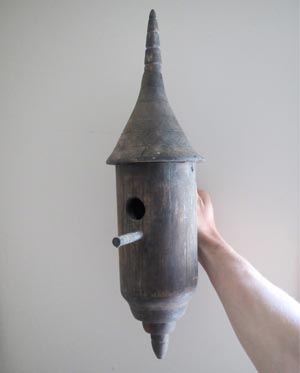 |
Handcrafted with attention to detail and built to last. The turned birdhouse design could be compared to the rounded cavity of a tree which may be preferred by the birds building nests. The design has been passed down from Bert Cranmer, Travis' grandfather. This design is composed of 14 sides that are glued together and then spun on the lathe to create a perfectly round birdhouse. The birdhouses that are different colours are composed of two different types of wood, typically seven sides of maple, and seven sides of the other type of wood. The pine birdhouse to the left built by Bert Cranmer has lasted over 20 years outside and had no additional preservatives applied after the initial coats. However, if a waterproof coating is applied every few years it will ensure the turned birdhouse maintains its colour and structural integrity. A birdhouse of the same quality and value is hard to come by. |
| Finished with a Environmentally Friendly Preservative | ||
PolyWhey provides a tough and water-proof coating created from whey, a bi-product of the dairy industry. Unlike oil-based wood finishes that rely on petroleum, PolyWhey is derived from a renewable resource, has a VOC level of ≤180g/L (very low) and does not require a year to outgas - it is safe for birds the day it is finished. |
|
|||
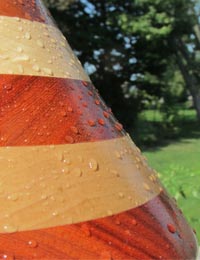 |
Although birds prefer a weathered look, after a few years the PolyWhey coating may start to show signs of wear. Another coat of preservative can be applied to extend the life of the birdhouse. Birdhouses mounted under an eave or porch will maintain their finish better than those fully exposed to the elements. | |||
| All wood products are affected by changes in the environment, (temperature and humidity) which can cause hairline cracks and slight warping over time if not sealed regularly. Cranmer Earth Design uses PolyWhey Exterior Wood Finish (Caspian Clear) from Vermont Natural Coatings. To find a retailer nearest you please click here. | ||||
| While not all materials used in making these birdhouses can be produced in Canada, these birdhouses are manufactured from the raw materials below in our workshops in Guelph and Sarnia from start to finish. |
| Wood - Eastern Canada (Maple, Walnut, Butternut & Oak) Exterior wood glue - Columbus, Ohio, USA PolyWhey® Exterior Wood Finish - Vermont, USA |
 |
| Several birdhouses have had extra attention when it comes to the production process while others have had some decorative woodburning added on the birdhouse body. Not all birdhouses are found on the Online Store, so if you are interested in a particlar type, please E-mail cranmer.earthdesign@gmail.com. Turned birdhouses have been made out of: •Black Walnut - Juglans nigra •Butternut - Juglans cinera •Oak - Quercus spp. •Maple - Acer spp. •Padauk - Pterocarpus soyauxii •Pine - Pinus strobus •Purple Heart - Peltogyne paniculata •Zebrawood - Microberlinia brazzavillensis |
 |
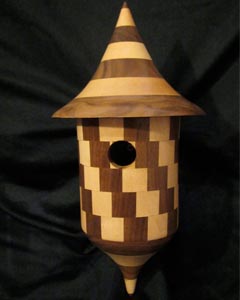 |
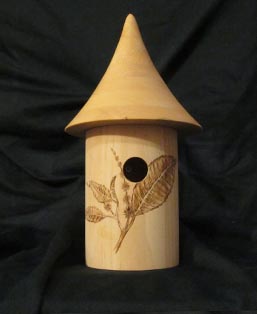 |
|
|
Sitemap | In Season | Products | Information | Store | Contact Us
© Cranmer Earth Design ![]()














